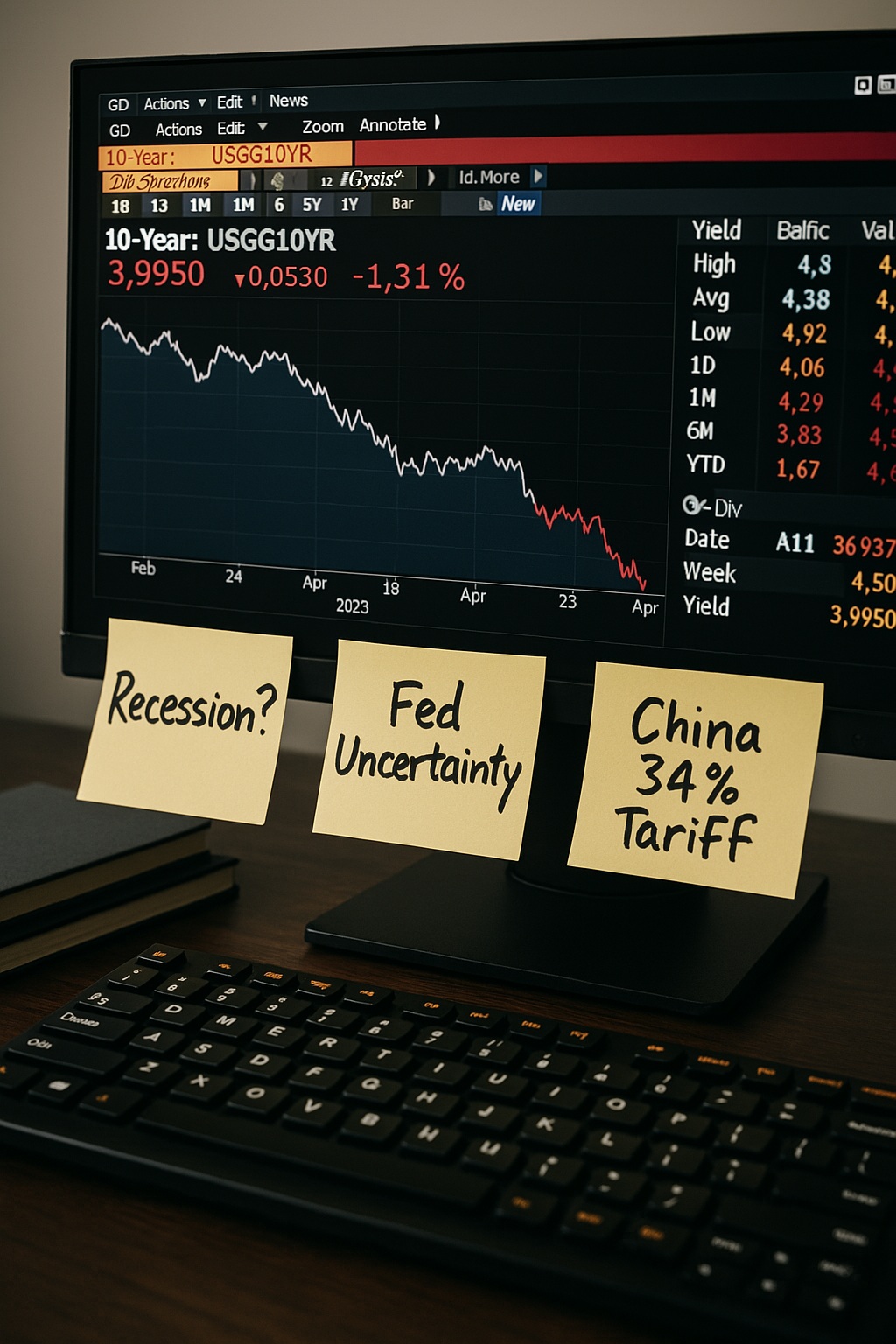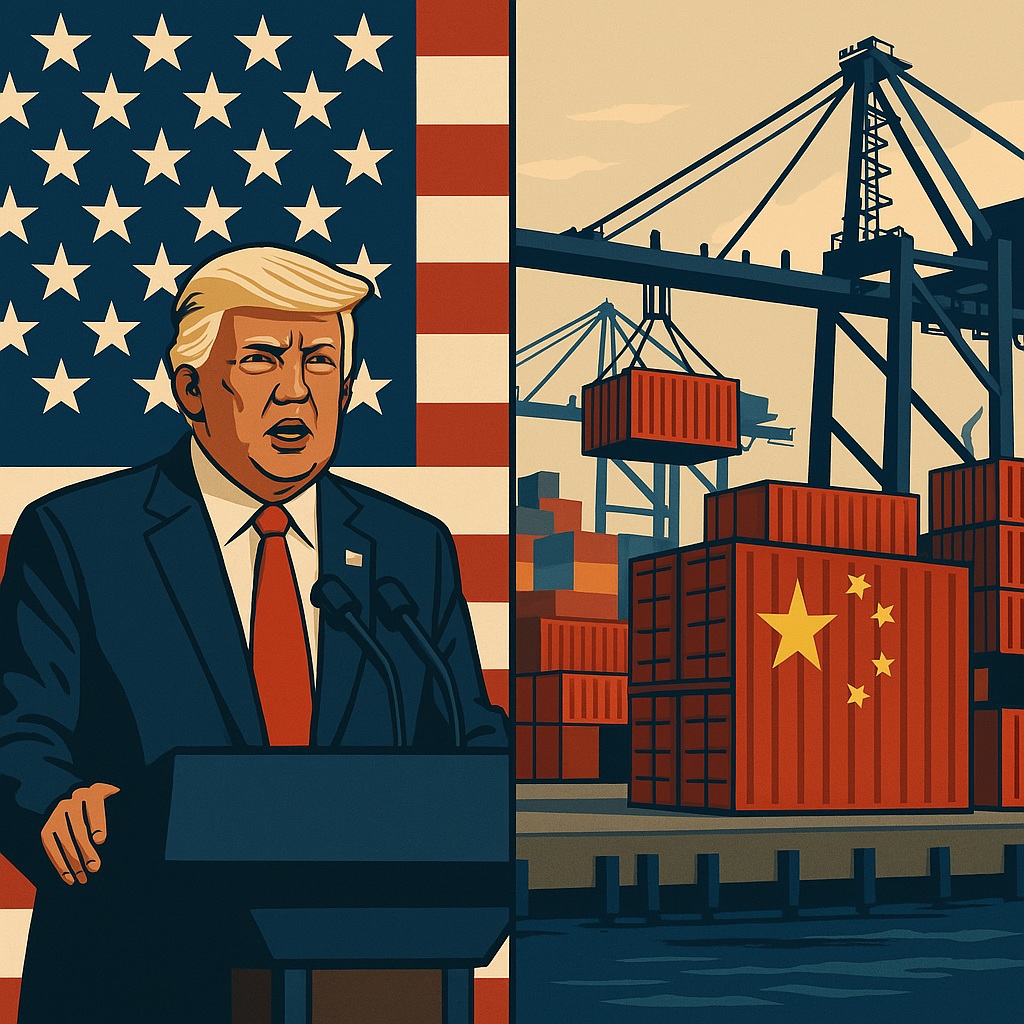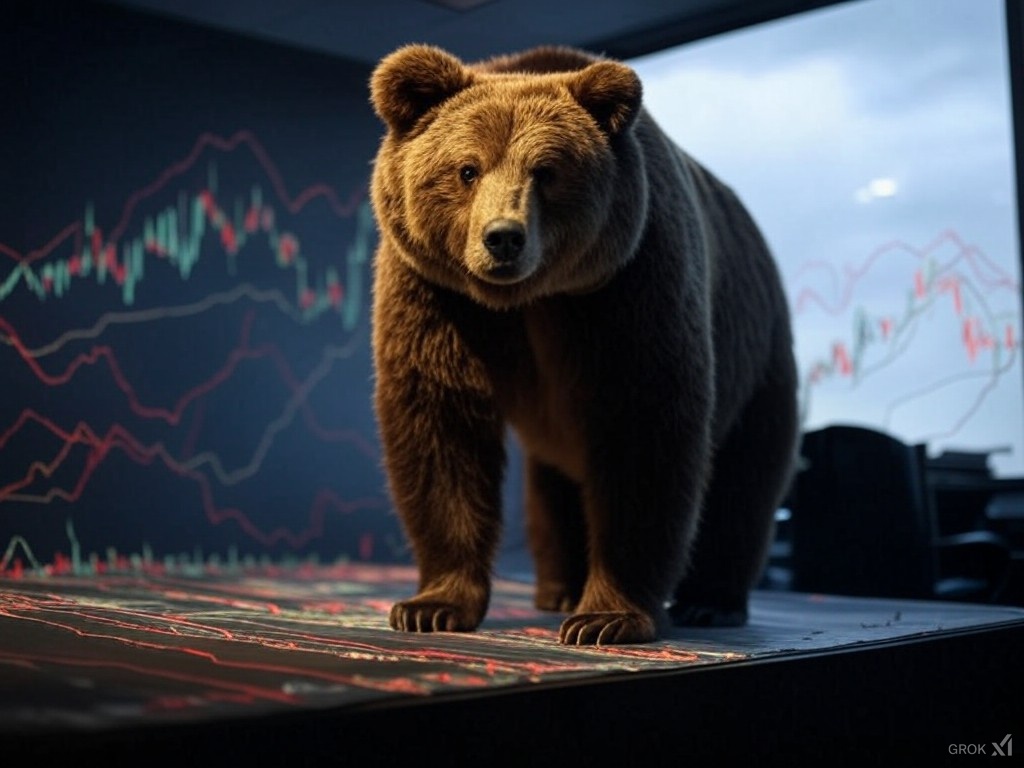Let’s get one thing straight: the 10-year Treasury yield doesn’t move just because. It moves for a reason. And right now, as of April 7, 2025, it’s sitting around 3.995%, after falling from higher levels earlier this year.
But why?
Why are investors piling into U.S. Treasurys like they’re the only safe thing left?
Why are yields sliding when the job market looks fine?
Why are we watching positive data… and feeling negative?
Something doesn’t add up. But maybe it does.
First, what’s the 10-year Treasury yield?
It’s not just some boring line on a chart.
The 10-year yield is a kind of pulse check on the U.S. economy. It’s how much interest the government has to pay to borrow money for ten years. And it’s a key signal investors use to guess where things might be going—growth, inflation, recession… all of it.
Right now, that pulse is slowing. And that’s not nothing.
3.995%. But what does that number even mean?
So, today, April 7th, Grok’s X post said the yield was about 3.995% at 6:39 AM EST. But other places said different things.
- Trading Economics said 4.01%.
- CNBC had it at 3.96%.
- Yahoo Finance showed 3.985% back on April 4.
- FRED? They logged 4.06% on April 3.
And earlier? April 6 showed 3.93% in one source. So yeah, it jumps around.
These aren’t huge gaps. But they’re enough to make you double check your numbers before you tweet.
But here’s what really matters — the trend.
Just a few weeks ago, we were looking at 4.8% on the 10-year. That’s a big fall. And it’s not happening in a vacuum.
Why’s it falling?
Well, there’s a big, loud reason: another U.S.-China trade war.
Tariffs and recession fears.
President Trump rolled out new tariffs on April 2. China? They’re firing back hard with 34% tariffs on U.S. goods starting April 10.
That’s a problem.
When two of the world’s biggest economies start playing tough again, markets get nervous. Global supply chains don’t like tension. Businesses slow down. Investors get spooked.
And when that happens? They run to safety. They buy Treasurys. Demand goes up. Yields go down.
That’s what we’re seeing now.
Even good news isn’t helping.
Here’s the weird part.
In March, the U.S. added 228,000 new jobs. That’s way more than the expected 140,000. Normally, that would push yields up, right?
But no.
Yields kept falling. Because fear is louder than data right now. Strong jobs? Doesn’t matter when everyone’s thinking about a global slowdown.
And by the way — Q1 GDP dropped by 3.7%. So there’s that.
What’s the Fed saying?
Jerome Powell, Chair of the Federal Reserve, hasn’t exactly eased any nerves.
He’s worried. He said the tariffs might raise inflation and slow growth. He also said the Fed is taking a “wait-and-see” approach.
That doesn’t exactly shout confidence.
So now, rate cuts aren’t a sure thing. And rate hikes aren’t either. Basically, no one knows what’s next.
And when things feel this unclear? That’s when investors dig in and go defensive.
Yield curve’s flattening. Again.
The 2-year Treasury dropped to 3.67% as of April 4, falling 5.5 basis points. The 10-year isn’t far above that.
That’s what people mean by a “flattening curve.”
Sometimes, it inverts. That’s when shorter-term yields are higher than longer ones. And that’s a classic recession warning. It’s happened before — right before 2008, and before that, the early 2000s.
We’re not there yet. But we’re close.
Looking ahead? Still cloudy.
Forecasts from Trading Economics say the 10-year yield could fall to 3.88% this quarter, and maybe 3.70% in a year.
Could be right. Could be wrong. These models are smart, but they don’t see the future. They don’t know what headlines are coming next.
What we do know: big money is betting on things getting worse before they get better.
Final thought — this isn’t just noise.
When yields fall this much, it’s not random.
It’s a message. Markets are saying, we don’t feel safe. They’re not chasing growth. They’re not excited. They’re looking for shelter.
And when the smart money runs for cover?
Might be worth asking why… and where we’re headed next.



